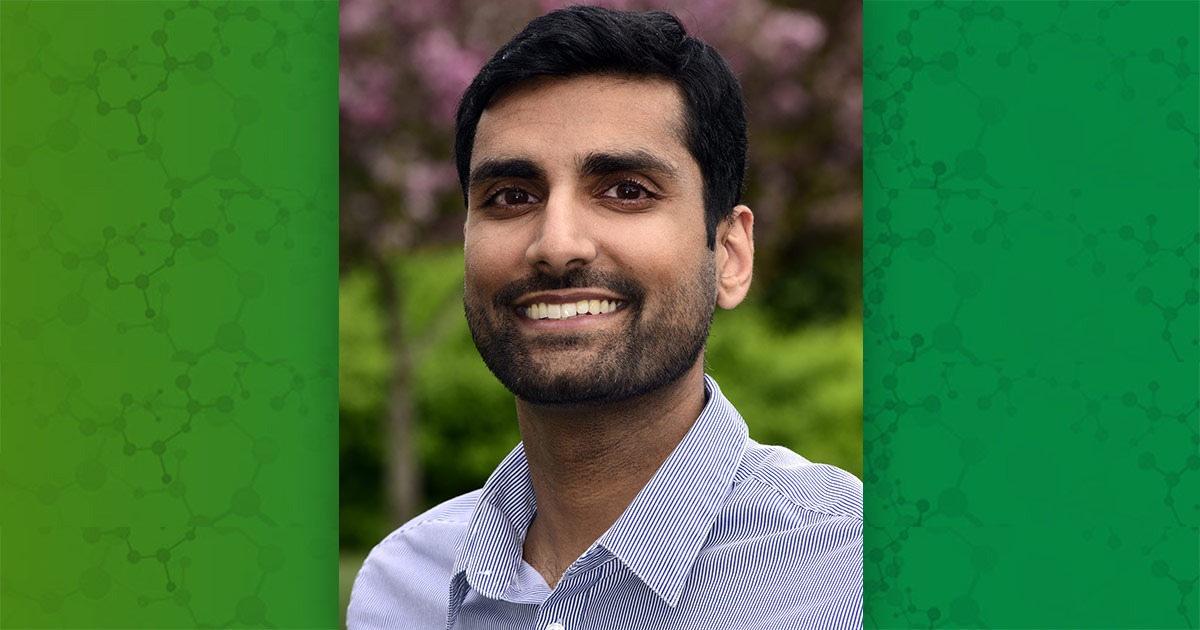In February, Suril Mehta, Dr.P.H., a Division of Translational Toxicology environmental epidemiologist, completed a year-long detail at the White House Council on Environmental Quality (CEQ), where he helped develop regulations and policies related to air pollution, drinking water contamination, lead, ethylene oxide, PFAS, chemical accidents, and carcinogenic substances. During his tenure at CEQ, he also served as the White House’s interagency coordinator for the East Palestine, Ohio, train derailment response, and he led efforts to ensure environmental hazards were considered as part of President Joe Biden’s Cancer Moonshot initiative.
The spark that ignited Mehta’s career journey from the U.S. Environmental Protection Agency (EPA) to NIEHS and eventually the Executive Office of the President? His older sister Eshani, a breast imaging radiologist and breast cancer awareness advocate, who has been a constant source of inspiration to Mehta throughout his life.
Environmental Factor recently met with Mehta to discuss his work at the White House, mentors who have inspired him, and the value of NIEHS research to inform and shape policymaking.
EF: What led to your detail at the White House and what were some of the highlights of your time there?
Mehta: The White House Council on Environmental Quality was looking for a public health scientist with a science and regulatory policy background, and given my career ping-ponging back and forth between the two over the past 18 years, I thought it was a natural fit for me.
The role itself involved ensuring that the best possible science and consideration for environmental justice were being incorporated into high-level, complex, and consequential environmental and occupational policy. I strongly believe we achieved that and then some. I would argue that this was probably the most productive year for science-based policies to mitigate hazardous environmental chemicals in the U.S. in decades.
EF: Where does the science behind all these major actions start?
Mehta: Partly at NIEHS with our funding and leading intramural research. I want everyone to know that our work here at NIEHS is not just science for science’s sake, but actionable research that influences policymaking. The proof is in the pudding over the last year. Your work to further public health is not just put on the shelf collecting dust — it’s being used to tangibly improve people’s lives.
In the last year, we proposed a drinking water regulation to remove all lead pipes within 10 years and made significant progress on regulations to limit chemicals under the Toxic Substances Control Act. For example, this year marked the ban of certain uses of asbestos in this country, a long-overdue and historic rulemaking that exemplifies the continuum from actionable research to successful policy. These efforts could not have been done without the tireless effort of civil servants working collectively across the federal government.

EF: What was a defining moment in your scientific journey?
Mehta: When I joined the EPA as a Presidential Management Fellow, I was coming as a junior-level environmental epidemiologist mostly focusing on primary research at the U.S. Centers for Disease Control and Prevention (CDC). However, I was immediately thrown into the fire of developing regulations and policies that impacted millions of people, dealing with lawyers, congressional statutes, environmental engineers, risk assessors, and other disciplines across and outside of the EPA.
That really was an “aha” moment for me. Seeing such a broad spectrum of environmental science — from nascent primary research all the way up to policy implementation and evaluation — has been incredibly beneficial in shaping my time at NIEHS and the White House.
EF: Which mentors have played a pivotal role in your career?
Mehta: One of my first formal mentors was Jennifer Parker [Ph.D.] at the National Center for Health Statistics within the CDC. She patiently guided me through learning data analysis while working on complex survey data, such as the National Health and Nutrition Examination Survey, which was a real boon for my career.
My current manager at NIEHS, Ruth Lunn [Dr.P.H.], has also been a great mentor for me. In her role as director of the Report on Carcinogens, she’s taught me how to conduct robust cancer hazard evaluations using systematic review methodology, specifically within the field of environmental and occupational health.

EF: What brought you to NIEHS?
Mehta: I wanted to get back to the science while also contributing to policy work, which NIEHS allowed me to do. I came from a children’s environmental health background, so working on the Report on Carcinogens was a bit of a shift. But those basic methods for applying systematic review to environmental exposures are the same regardless of the specific population, which is what brought me to where I am today.
EF: What do you enjoy most about working in the environmental health sciences?
Mehta: What I appreciate about environmental health is that your objective research, hazard conclusions, and policymaking can have a direct impact. There is a real opportunity for meaningful change, and our recent research evaluating our impact confirms this point.
Our field has advanced to purposely and intentionally account for communities with environmental justice concerns, vulnerable life stages, and people that are being overburdened by a mixture of hazardous chemical pollutants. We’re making a difference in the lives of people who wouldn’t otherwise have a voice.
(Ben Richardson, Ph.D., is a Presidential Management Fellow in the NIEHS Office of Communications and Public Liaison.)
Source link
factor.niehs.nih.gov



